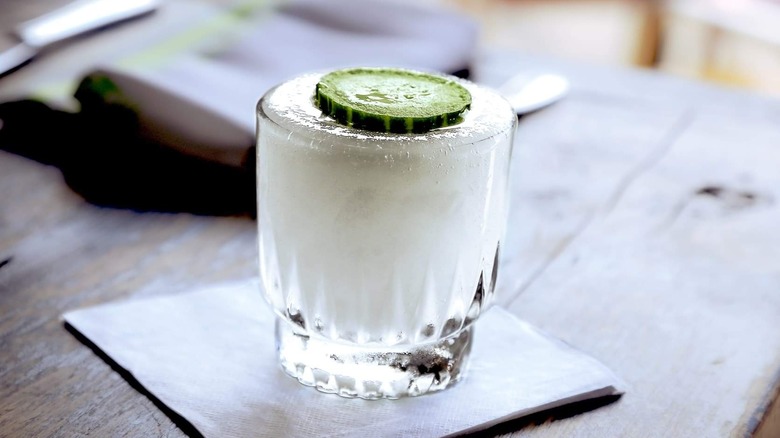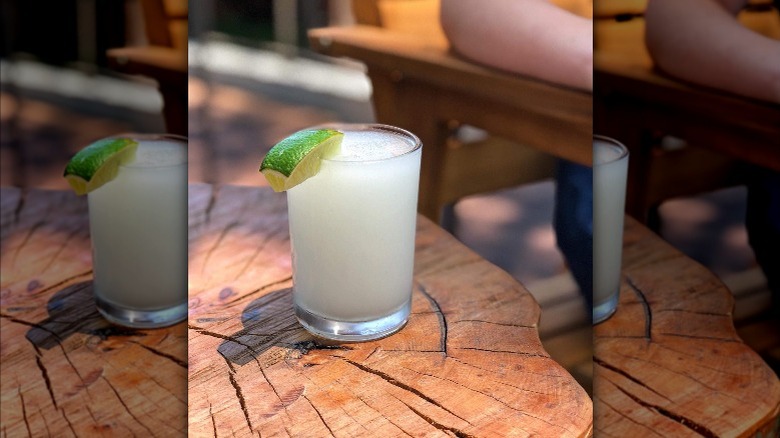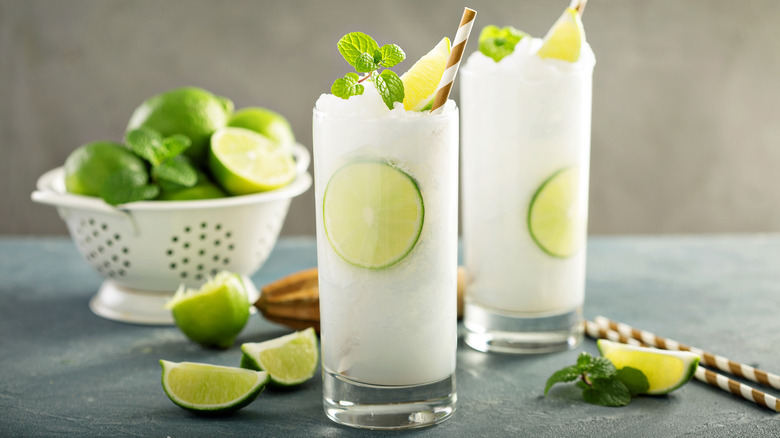A Frozen Gin And Tonic Is The Cool Cocktail You Need This Summer
When it comes to frozen drinks, cocktails like margaritas, daiquiris, and piña coladas come to mind. While those beverages can be refreshing, they don't necessarily offer a smooth, clean finish on the palate. This is where the frozen gin and tonic comes in.
Beverages of a frozen nature, especially fruity drinks, usually call for granulated sugar in the recipe. However, you should probably ditch that granulated sugar for a velvety texture, because this ingredient can result in a grainy feel – particularly with the cooler temperature involved — when blended. And sometimes you don't want an overly sweet cocktail on a hot summer's day, anyway. In this situation, not even substituting in basic simple syrup will work, especially if it's a rich syrup containing a 2-to-1 ratio of sugar and water.
That's precisely why the frozen gin and tonic is the best solution here. It still has that slushy-esque quality that everyone looks for in a frozen drink, and while there will still be a bit of sweetness, the bitterness from the quinine in the tonic should offset that. However, before you reach for a ton of ice and your favorite bottle of tonic water, there are some things worth noting.
How to make a frozen gin and tonic
Rob Kruger is one professional to have whipped up this sort of drink. Featured in the book "Brooklyn Bartender," Kurger's recipe calls for tonic syrup instead of tonic water (via Serious Eats). This is noteworthy because while tonic water is usually the norm, it may not be best to put it into a blender. That's because it's a carbonated drink, and blender manufacturers often advise not to use their equipment with those types of beverages, because they may cause injury. It might also displace the carbonation, given all the movement involved. So, why risk it?
Another thing to consider is the alcohol content and freezing points. While gin, like other spirits, contains a mix of water and alcohol, you must keep in mind the proof when creating a slushy-type texture, which is the goal here. Despite water having a freezing point of 32 degrees Fahrenheit, pure alcohol begins to solidify at around -175 degrees Fahrenheit. So, if your liquor is around 30% to 40% alcohol by volume (60 to 80 proof), it should start to freeze around 5 to -10 degrees Fahrenheit. Essentially, the higher the proof, the harder it will be to get close to that desired slushiness.
Making the frozen gin and tonic your own
Everybody's preferences differ; some may desire the simple beauty of a basic gin and tonic with its elegant marriage of citrus, herbaceous juniper berries, and the nuanced bite of quinine. However, some would rather have a gin and tonic with a bit of flavor, which is easier to obtain now than ever, considering all the uniquely flavored gins out there.
Still, suppose you'd rather not leave your favorite unflavored gin out of the mix, still having your proverbial cake and eating it, too. In that case, you can take a page out of Rob Kruger's book by adding extra components. As noted in Brooklyn Magazine, Kruger offered up their frozen gin and tonic with blended cucumber.
Frozen gin and tonics are a great base to experiment with, so you can make the beverage your own. By incorporating other fruits like cucumber and melon, or herbs like mint and rosemary, you can fashion a drink individualized to your palate. What more can you ask for on a sweltering summer afternoon?


